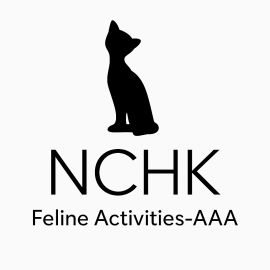Feline Activities at Home: Returning to the Relational Roots of Animal-Assisted Interventions
2025-09-24
Feline Activities at Home: Returning to the Relational Roots of Animal-Assisted Interventions
Abstract
This article presents the concept of Feline Activities at Home as a return to the relational foundation of Animal-Assisted Interventions (AAI). Rather than focusing solely on structured institutional programs, this model emphasizes the natural resources inherent in the human–animal bond as a basis for activation, emotional regulation, and co-regulation of the nervous system. By situating therapeutic processes within everyday domestic contexts, feline activities restore the original essence of AAI: spontaneous, reciprocal, and meaningful interactions between humans and animals.
Introduction
Animal-Assisted Interventions have evolved into structured practices within clinical, educational, and social institutions. However, the historical and anthropological origins of AAI lie in the natural bond between humans and companion animals. Cats, with their unique ethological characteristics, are particularly well-suited for domestic, low-threshold forms of therapeutic support.
Feline Activities at Home build on this foundation by re-centering interventions in everyday life. The home becomes not only a space of companionship but also a context for activating neurobiological and psychosocial resources that emerge from the mutual presence of humans and animals.
Theoretical Framework
-
Polyvagal Theory (Porges) – explains how safe social interactions with animals can regulate autonomic states through activation of the ventral vagal complex.
-
SIBAM model (Levine) – provides a framework for understanding how sensations, images, behaviors, affects, and meanings emerge from relational experiences with animals.
-
Human–Animal Bond paradigm – emphasizes reciprocal, non-verbal attunement and shared regulation between humans and companion animals.
Core Principles of Feline Activities at Home
-
Activation through natural resources: Everyday routines such as feeding, grooming, or shared rest become opportunities for sensory stimulation, embodied awareness, and co-regulation.
-
Relational safety: The home setting fosters trust, familiarity, and continuity, reducing stress for both humans and cats.
-
Mutual benefit: The cat’s welfare is equally prioritized; activities are voluntary, respecting feline autonomy and ethological needs.
-
Low-threshold accessibility: Individuals can engage without institutional referral, financial cost, or complex organizational structures.
-
Integration into daily life: Therapeutic value emerges organically, without the need for formalized sessions or external validation.
Practical Applications
-
Activation of sensory–motor pathways: Gentle tactile stimulation (stroking, brushing) and observation of feline body language encourage mindfulness and embodied regulation.
-
Emotional attunement: Shared routines (feeding, play) support feelings of safety, predictability, and connection.
-
Cognitive stimulation: Conversations about the cat, remembering past animal relationships, or observing feline behavior enhance memory, attention, and narrative integration.
-
Social and family integration: Cats often act as mediators of family interaction, facilitating communication and joint activities.
Discussion
Feline Activities at Home reconnects AAI with its original relational essence: the spontaneous, natural presence of animals as companions and co-regulators of human well-being. By grounding interventions in everyday contexts, this model broadens the accessibility of felinotherapy and reduces the risk of over-institutionalization.
Rather than replacing professional AAI, home-based feline activities can complement clinical practice by emphasizing prevention, resilience, and everyday mental health support. They remind the field of AAI that its roots lie not in structured protocols but in the ancient co-evolutionary relationship between humans and animals.
Conclusion
The model of Feline Activities at Home highlights the potential of everyday human–cat interactions as resources for activation and regulation of the nervous system. Returning to the relational foundations of AAI strengthens the human–animal bond, ensures welfare-centered practice, and revitalizes the original therapeutic essence of zootherapy. Future research should examine how domestic, low-threshold forms of felinotherapy contribute to long-term well-being and resilience.
Preview of picture in folder Aktivity pro sedící či ležící osoby se zachovanou pohyblivostí horních končetin







